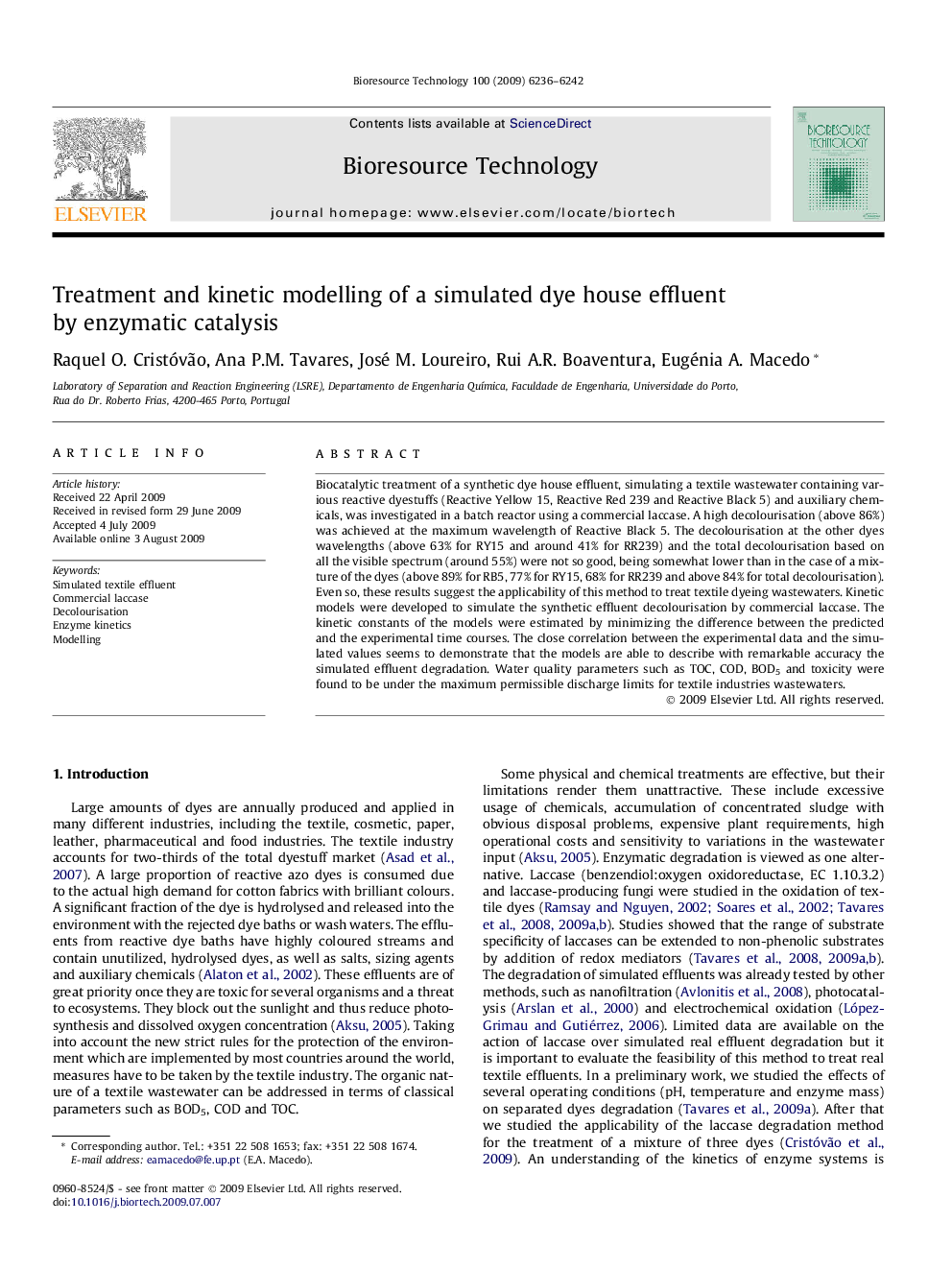| Article ID | Journal | Published Year | Pages | File Type |
|---|---|---|---|---|
| 683421 | Bioresource Technology | 2009 | 7 Pages |
Biocatalytic treatment of a synthetic dye house effluent, simulating a textile wastewater containing various reactive dyestuffs (Reactive Yellow 15, Reactive Red 239 and Reactive Black 5) and auxiliary chemicals, was investigated in a batch reactor using a commercial laccase. A high decolourisation (above 86%) was achieved at the maximum wavelength of Reactive Black 5. The decolourisation at the other dyes wavelengths (above 63% for RY15 and around 41% for RR239) and the total decolourisation based on all the visible spectrum (around 55%) were not so good, being somewhat lower than in the case of a mixture of the dyes (above 89% for RB5, 77% for RY15, 68% for RR239 and above 84% for total decolourisation). Even so, these results suggest the applicability of this method to treat textile dyeing wastewaters. Kinetic models were developed to simulate the synthetic effluent decolourisation by commercial laccase. The kinetic constants of the models were estimated by minimizing the difference between the predicted and the experimental time courses. The close correlation between the experimental data and the simulated values seems to demonstrate that the models are able to describe with remarkable accuracy the simulated effluent degradation. Water quality parameters such as TOC, COD, BOD5 and toxicity were found to be under the maximum permissible discharge limits for textile industries wastewaters.
